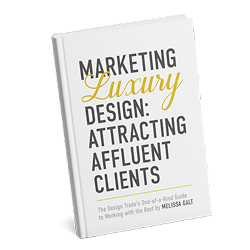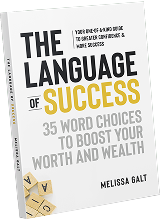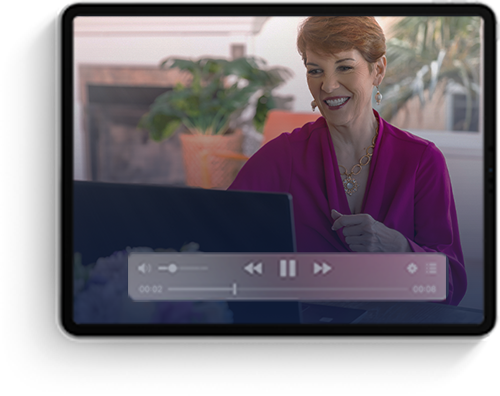Bootstrapping Your Interior Design Business: My Start-Up Story
If you’re in the early stages of your design business—or rebuilding from scratch—you don’t need a trust fund, deep-pocketed investors, or a big-name firm behind you. What you need is creativity, tenacity, and commitment.
That’s how I did it.
EPISODE HIGHLIGHTS
06:45 – Why I kept working just two weeks after my mom passed
17:20 – Getting fired after vacation
22:40 – Teaching and dishwashing to bootstrap my business
30:15 – The real reason I was $70K in debt
33:00 – How I became debt-free and hit six figures in just 18 months
When I was figuring out how to start an interior design firm, I didn’t have a glamorous launch or a waiting list of clients. I had debt, hustle, and a deep belief that I could make it work. And I did.
Here’s how it really looked.
1. Setting the Stage: Becoming a Turnaround Artist
I graduated from Cornell University with a Bachelor of Science in Hospitality Management. It had been mom’s big plan for me and I wanted to make her proud.
I spent the next five years as a purchasing agent for high-end hotels and resorts across the Southeast—moving cities, states, and companies every 8 months. I became the turnaround artist, stepping into underperforming purchasing departments and transforming them into profit centers.
When my mom passed suddenly from a brain aneurysm, just 18 months after I’d graduated, I was already in my third job. I took just two weeks off and went right back to work—because I needed to work, time off wasn’t an option.
As a purchasing agent, if you ate it, drank it, slept on it, or wrote with it—I bought it.
My biggest and most challenging post was when I was recruited by Opryland Hotel in Nashville. I was a young woman in a male-dominated field. The general manager interviewing me asked, “Are you married?” I said no. His response? “What’s wrong with you?”
Let’s just say… that would not fly today.
My boss there was a classic good ol’ boy and promised me he’d have me married off in a year. No thank you.
I earned a reputation for integrity—I refused gifts or incentives from vendors, and that didn’t sit well with some. One of the largest vendors pushed me out for it… then turned around and offered me a job. I wasn’t interested.
I was hired next at Callaway Gardens. And it was there that I realized: I was very good at what I did, climbing the corporate ladder… and miserable doing it.
I looked at my bank account, gave myself six months to return to school, and made the leap to interior design.
2. Back to Birmingham & Into Design
I returned to Birmingham, Alabama—where living was affordable and I could accelerate a 3-year design program into just 2.
Six months in, I landed a job as Design Librarian at Architect’s South | Bodine, a commercial design and architecture firm.
That role taught me a lot about the materials of design, commercial sources, and the behind-the-scenes of a successful architecture and design firm. It gave me an early look at what works—and what doesn’t—when you’re thinking about how to start an interior design firm.
I built out their design library and made the whole team more efficient.
Six months later, I was promoted to Junior Designer and had to master CAD. I helped with space planning and concept boards on projects like Blue Cross Blue Shield—think rows of Steelcase cubicles and endless fluorescent lighting. You’d have a plan completed and they’d call in and say they added four team members and I’d have to find a way to add four more workstations.
It was mind-numbing.
But I did gain good CAD skills, yet never really used them again. Residential design back then was all manual. No tech, no apps, no digital magic.
3. Retail Design & Business Insight
Next, I took on the role of manager at M’s Fabric Gallery in Birmingham. It wasn’t named after me!
Think of it like a Calico Corner, wholesale fabrics from the bolt, with both consumers and designers sourcing from us. I curated inventory, handled vendors, and honed my skills in pricing, trend forecasting, and customer experience.
4. Big Box to Breaking Point
I moved to Atlanta and started as a designer at Ethan Allen in Alpharetta. For 18 months, I served residential clients, created design plans, and helped homeowners elevate their spaces.
I requested my last vacation (anticipating my start up in 6 months) but my manager said I didn’t have the time. I argued the point and took my vacation. I returned to my vacation paycheck, I’d been right, but it was also my last paycheck, I’d been let go.
While I didn’t feel “ready,” I had no choice and no clients, so I launched my practice.
5. The Great Leap: Starting My Own Firm
I hustled.
I had already taught a class at UAB called Gallery Hopping, and it was a hit. So I pitched classes to Emory, Oglethorpe, and Spruill Arts. All said yes.
I became a designer by day and teacher by night. That teaching income? $12,000/year—two years later it became my travel fund.
To make ends meet, I also supervised catering events at an historic home, running the kitchen and the hot sweaty dishwashing machine. I earned ten bucks an hour… and I needed every penny.
Behind the scenes, I was drowning in credit card debt. When my mom passed, I didn’t know how to fill the hole in my heart. So I shopped. Hard. This was pre-internet, all catalogs. The act of buying gave me a dopamine hit. I didn’t even open half the boxes.
When I stepped out on my own, I was $70K in debt, living in a cramped Alpharetta apartment, with a car payment, way too many credit card bills, and no safety net. But I was determined to figure out how to start an interior design firm—and make it work, no matter what.
6. Scaling & Becoming the Authority
My early days were full of trial, error, and tenacity.
I opened my doors with a bookkeeper, accountant and legal counsel on call, otherwise I wore all the hats in my business.
✓ Designer
✓ Project manager
✓ Marketer
✓ Office administrator
✓ Design librarian
✓ And more (36 hats in total!)
I was hourly starting out at $65 an hour and when I raised it to $75, I lost a key client. OUCH! Designers coming out of school today earn $125 – $150.
There were times I took the wrong clients, said yes too much, and learned my lessons fast and often.
What gave me an edge?
1. My mix of hospitality business sense and design creativity
2. Operational systems brought into a creative industry that often lacked structure
3. Becoming my own case study in what worked—and what didn’t
Over time, I grew. I built a business that supported me, not one that drained me.
It took me 18 months to get right side up, debt free, and earning 6-figures.
You can do it faster today with the digital tools and reach possible.
7. Core Lessons for You
Here’s what I’ve learned:
✓ Flexibility is your superpower
✓ Hospitality taught me how to run lean and profitable
✓ Retail taught me how to price, sell, and serve
✓ Entrepreneurship taught me self-reliance and resilience
✓ And mindset? Mindset is everything
I never considered failure. It doesn’t mean I didn’t fall flat a few times—I absolutely did. But I always figured it out. And when I didn’t know the answer, I found someone who did.
That same mindset applies when you’re figuring out how to start an interior design firm. You don’t need to have all the answers—you just need to stay curious, stay in motion, and stay connected to people who’ve done it before.
That’s what I do for the designers I coach now. I’m your go-to when you need strategy, clarity, resources, or perspective. I’m also the turnaround expert that knows how to take you from $300K to $750K or from $1M to $3M.
Ready to Scale Your Design Practice?
So now you’ve got a snapshot of how I began—gritty, scrappy, creative, and 100% committed.
It wasn’t glamorous. It wasn’t easy. But it was mine.
And it built the foundation for the business and life I have today.
Attitude will always beat raw talent, deep pockets, or lucky breaks. Your mindset is your greatest asset.
Whether you’re scaling your studio or still figuring out how to start an interior design firm, it all begins with a clear vision and a smart plan.
And that’s why I always say…
You’ve got this—because I’ve got you.
I mean that. And I want the absolute best and highest good for you, always.
If you’re ready to stop playing small and start building the firm you’ve been dreaming about, clarity and strategy are your first steps. That’s exactly what we’ll create together during a complimentary Design Business Assessment. We’ll take a close look at your design practice, identify where you are, and map out a plan to close the gap between that and where you want to be.
Book yours now at melissagalt.com/DBA.





